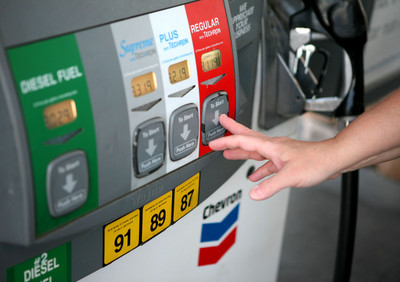A modest gas-price proposal

This week readers want to know what’s going on with gasoline prices and what can be done about it, where Las Vegas’ gasoline comes from, and whether motorcyclists are allowed to split traffic in Nevada.
Todd Harvey wants to know what in the world is going on with gas prices lately and whether there is anything elected officials can do about it.
The soaring price of gasoline can be attributed to one factor: the soaring price of crude oil, which constitutes about 60 percent of the gasoline we use.
Now the reason for the soaring pricing of crude, which flirted with $100 a barrel for the first time last week, can be attributed to a number of factors. Market analysts point to ever-growing demand from the ever-growing industrial economies of China and India — not to worry, the United States is still the No. 1 consumer, by the way.
Other factors also play a role: the falling value of the dollar and fears of terrorism, which can affect trading on the commodities market.
It looks as if Congress might launch an investigation into whether speculation in crude oil futures helped jack the price up.
Phew. I should really leave this type of writing to my friends on the business desk.
As far as what our elected officials can do to help, depends on which side of the fence you happen to fall on. Some choices include asking the government to allow oil companies to drill in Alaska or spend more on research for alternative fuel sources.
Let’s see, we’ve already tried invasion and that hasn’t lowered oil prices. I propose a new strategy. We have a popular politician or maybe a movie star marry a member of the Royal Saudi family and gain influence from within until he or she is in a position to lower the price of crude oil.
Michelle asks where all the gasoline in Las Vegas comes from, and whether brand-name gasoline (i.e. more expensive) is any better.
Gasoline in the valley arrives through a pipeline from Southern California operated by a company called Kinder-Morgan, explained Michael Geeser, a spokesman and lobbyist for AAA Nevada.
The gasoline is refined to a standard set by the government. Once it arrives in Nevada it is tested by the Department of Weights and Measures. A sticker on the pump at your local gas station will inform you the last time the gas station was tested.
All gasoline is the same when it comes through the pipeline.
Once the fuel arrives in the valley it is distributed to different retailers. Some brand-name retailers then put additives in their product, which they claim make your vehicle run better, according to Tupper Hull, a spokesman for the Western States Petroleum Association, a trade association that represents petroleum companies in six western states including Nevada.
Since vehicles are made to work within the government standards for petrol, why do so many of us choose to pay more for gasoline?
Maybe it’s the influence of advertising. Maybe it’s just the convenience of a specific station.
I’ve bought gas from Chevron and Mobil stations and from Wal-Mart and Smith’s stations and I’ve never had a problem with any of them.
So it’s up to you, the consumer. What do you believe?
Sherry Haines wants to know whether it is legal for motorcyclists to split traffic by driving between lanes.
Nevada Highway Patrol Trooper Kevin Honea told me it is illegal for motorcycles to split traffic by riding between vehicles. "And people who get an endorsement to ride a motorcycle in Nevada know that. It’s part of their test," Honea said.
The practice is legal in California. And because so many Californians think of Las Vegas as Los Angeles East, they think the same laws must apply. That excuse won’t work on Honea and other law enforcement officers patrolling our roadways. "It is their (the motorcyclists’) responsibility to familiarize themselves with the laws of the states they travel in," he said.
Hit ‘n’ run: I recently saw a personalized license plate, "BMW GIRL" — on the back of a Mercedes.
Contact reporter Francis McCabe at fmccabe@reviewjournal.com or (702) 387-2904.